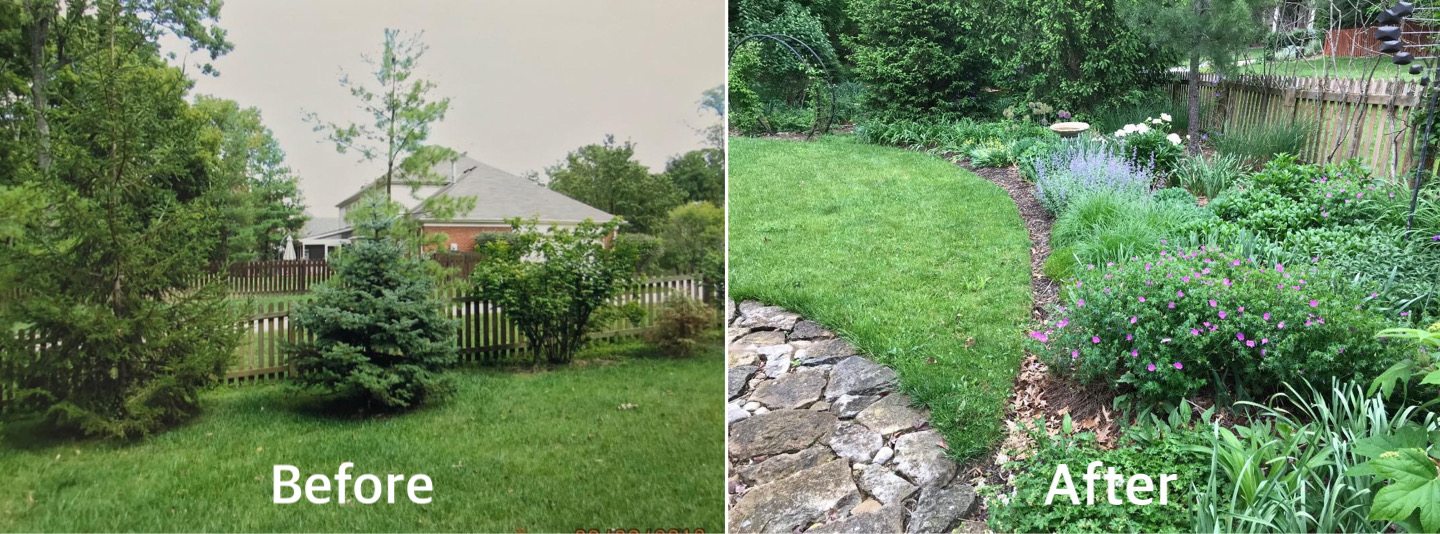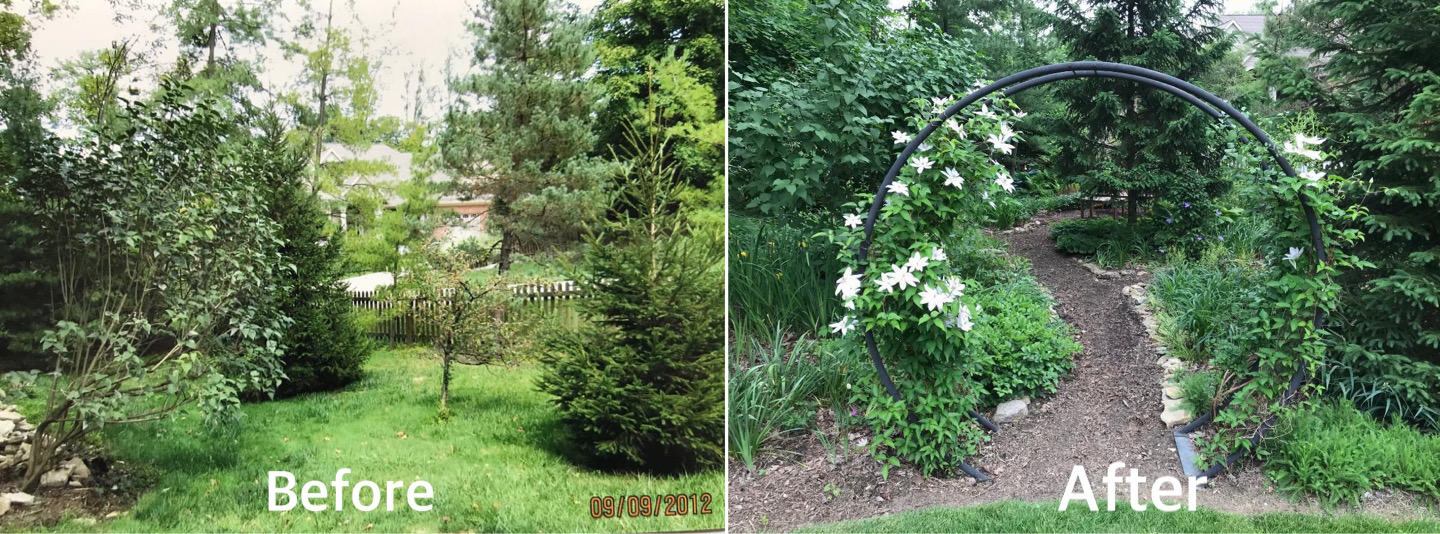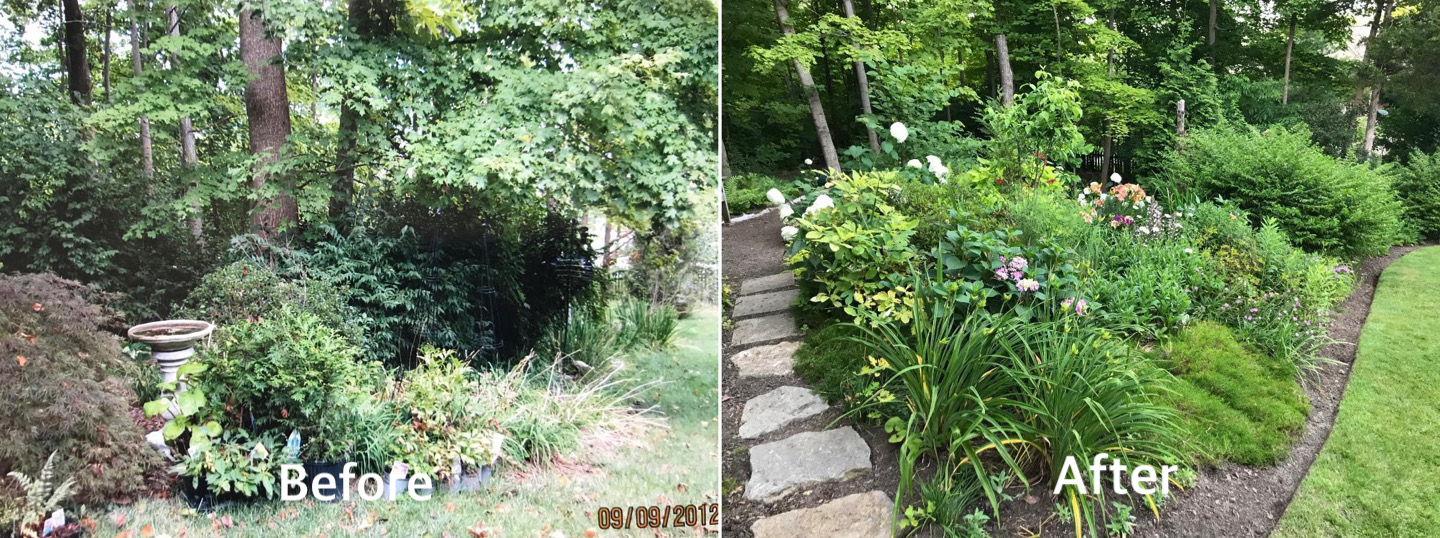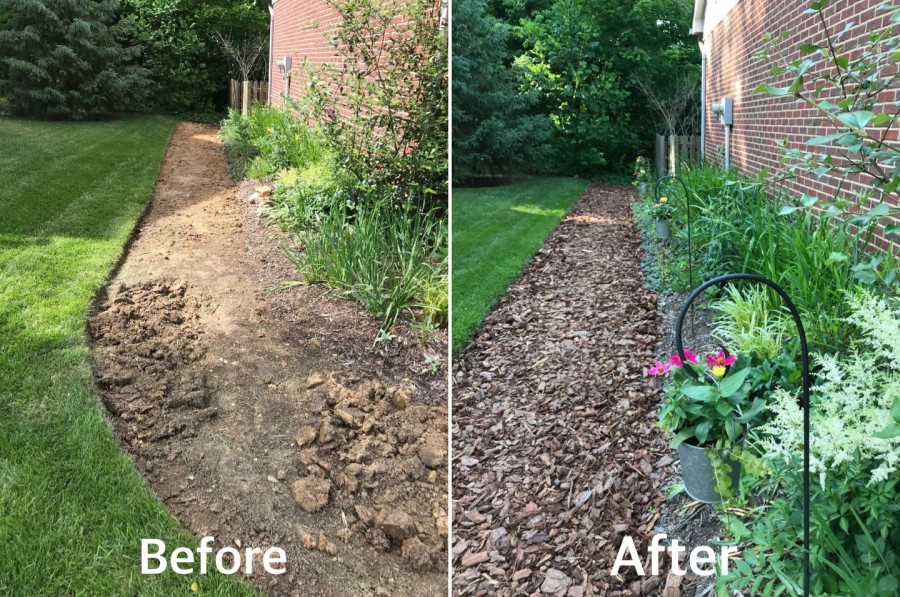Blog
Turn Your Property into Better Habitat

By Jeff Sperry, Director of Development and Marketing
I hate mowing the lawn. It’s noisy, messy, and smelly. Lawnmower motors are very loud; grass clippings get all over the place; and the fumes from the motor are noxious. My goal has been to eliminate—slowly but surely—quite a bit of lawn from my property. I’ve transformed lawn areas into garden areas with lots of native plants. It has been a very gradual process. Gardening is 90% patience, isn’t it?

When I purchased my home in April 2012, I immediately came up with a roadmap in my head about parts of the lawn which could be turned into garden areas, and I started the process that fall. My lot is a typical, half-acre suburban lot. However, the property was about half lawn and half woods. Of course, the wooded area was overrun by bush honeysuckle when we moved in.

My first project involved tackling a sunny lawn area which included a couple of scrubby burning bushes and a huge bush honeysuckle. After removing the unwanted shrubs, I used an easy method of reclaiming the space for a garden:
- Place a single layer of cardboard boxes on top of the lawn you want to remove (you could use 5 or 6 layers of newspaper instead.)
- Add a thin layer of compost (bags of this stuff are available at any big box store
- Add a 6 inch layer of hardwood mulch.
- Wait six months to plant anything
Although you could do this anytime of the year, fall is a great time, because the bare mulch isn’t a bother over the winter, and by spring you are ready to add plants—the fun part!

Over the next several years, I added a section at a time—some large, some small—transforming lawn areas into gardens, always making sure to incorporate native plants into the planting mix. One project simply turned a grass area going to the backyard (always worn down and trampled) into a mulch path. The area was already a path, albeit grass, but why continue to mow this difficult spot which really was a pathway to the backyard?
.jpg)
For woodland garden areas, my approach differed slightly. The first order of business was to remove all the bush honeysuckle in a specific section. Over the last 8 years, I have eliminated close to one hundred mature bush honeysuckle plants, each 10 to 12 feet tall. My process for removing honeysuckle is also pretty easy:
- Cut the stems of the bush off close to the ground
- Wait for new foliage to grow back
- When the new growth is about 6 inches high, carefully spray it with Round-Up
- Wait for the foliage to grow back a second time, and spray it again with Round-Up
This is usually all it takes to kill the shrub. Sometimes a third spraying will need to happen. For less mature honeysuckle shrubs, you can usually dig out the whole thing with a spade—they have pretty shallow roots.
After removing all the unwanted honeysuckle and other invasives like garlic mustard and multiflora rose, I sometimes add a layer of upside down sod taken from my lawn removal sites or garden bed edging, and then add a thick layer of hardwood mulch. You don’t have to wait six months to plant these areas because you aren’t killing lawn. Start adding plants right away – native wildflowers, ferns, shrubs and more trees if desired. (And yes, maybe a few hostas!)
All of this better-quality habitat has attracted area wildlife and thousands of beneficial pollinators to my property. I’ve seen several box turtles, including tiny babies. This spring, a golden-colored fox has been running around the back of the property. We regularly see downy and pileated woodpeckers in the woods, and on occasion a Cooper’s hawk comes to scout out lunch options. It is wonderful to see how much the native wildlife make use of a tiny suburban lot! And I find that gardens really take less time to maintain than lawns.